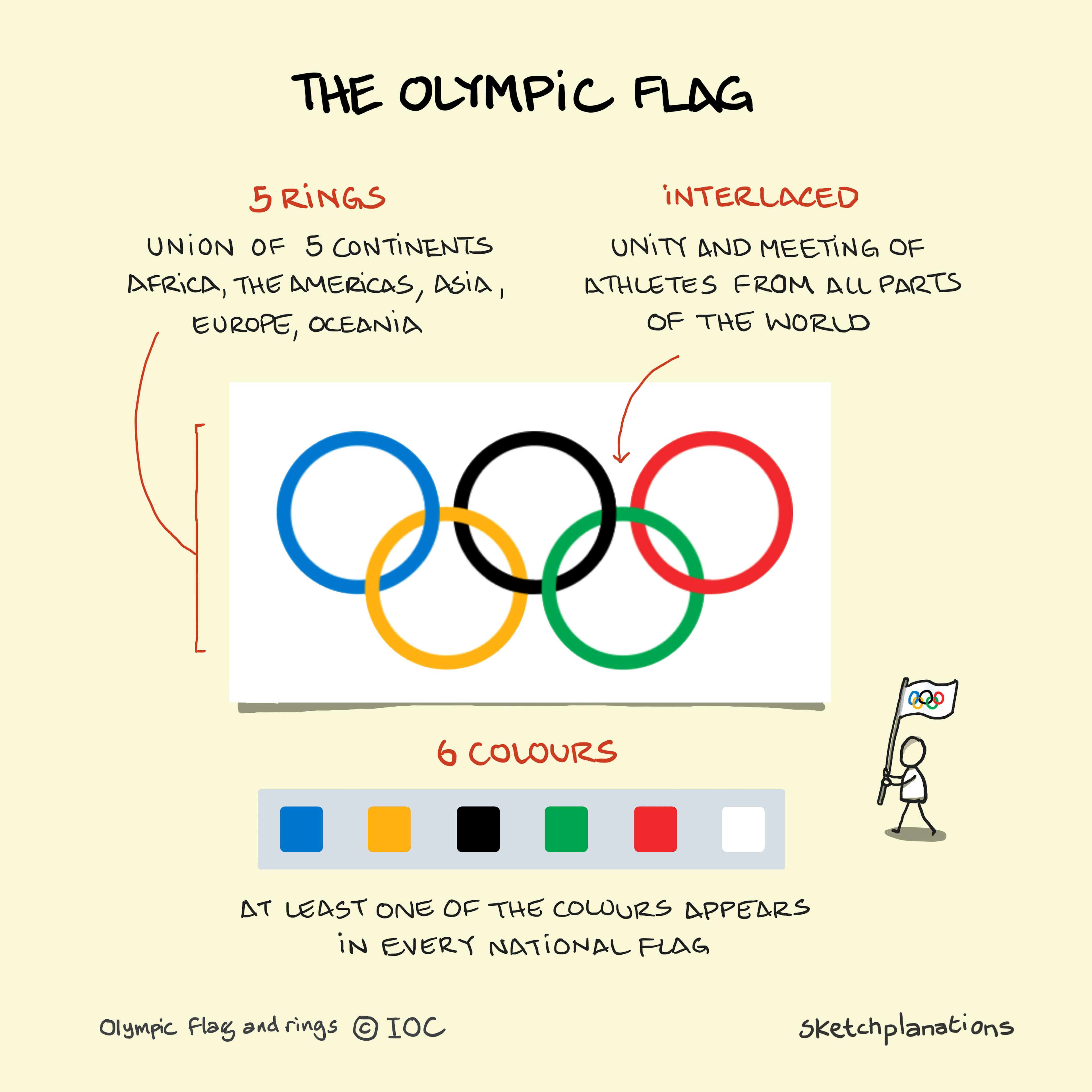The Olympic Flag

- Copied!
👇 Get new sketches each week
The Olympic Flag, which consists of five interlocking coloured rings, was created by Frenchman Pierre de Coubertin, the founder of the modern Olympic games, and unveiled in 1914.
Coubertin said that the five rings represent the five parts of the world embracing "Olympism" and competing against each other: Africa, The Americas, Asia, Europe and Oceania. The interlacing of the rings represents the unity and coming together of athletes from all parts of the world. Coubertin did not associate individual rings with individual continents.
The six colours of blue, dark yellow, black, green, red and white—the field on which the rings are set—"reproduce the colours of every country", and at least one is found on every national flag (I believe that’s still true).
I was thinking of including a sketch of each of the Olympic sports, but depending on how you count them, there are 32 sports and over 300 events.
You can learn more than you ever wanted to know about the history of the Olympic Flag in The Story of the Rings by Karl Lennartz (pdf).
The Olympic flag and various other Olympic Properties (like the rings, torch and motto) are © IOC.
Also see:

